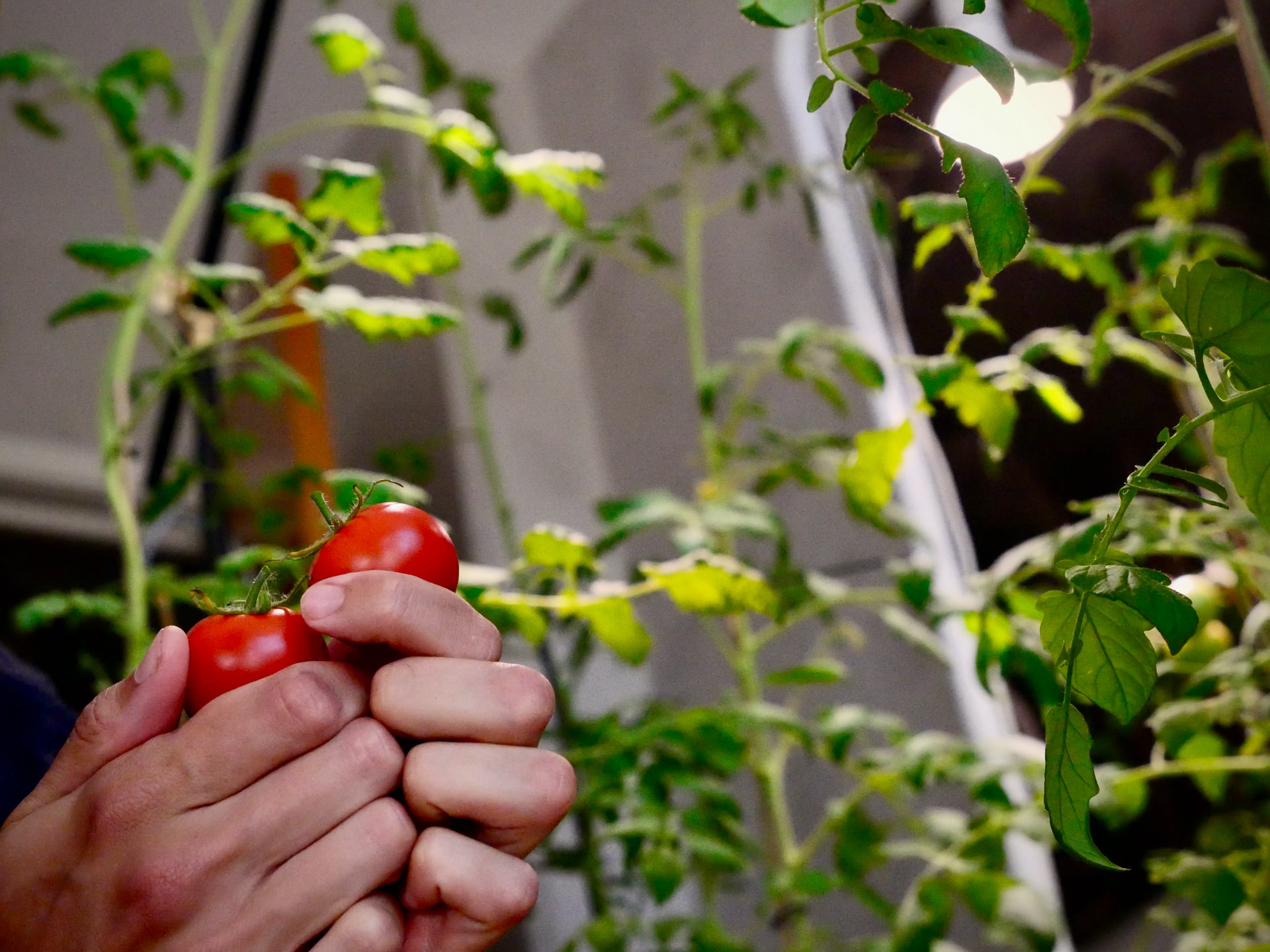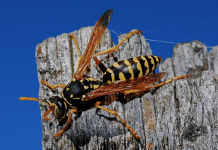
Many people see a gardening hat as useful only to keep the sun out of their eyes while tending their garden. While it’s helpful for keeping your vision clear when working outdoors, it also performs a much more important function. A gardening hat also protects your head, eyes, ears, and face from radiation damage.
People with outdoor gardens spend lots of time exposed to the sun. That means they also have increased exposure to the sun’s ultraviolet (UV) rays. Fortunately, protection from these harmful rays is not complicated or expensive. You can do it with something as simple as the shade from a gardening hat.
Related Read: Gardening Accessories For Every Color Thumb
Choosing the right gardening hat is more than a matter of style. You want it to protect your skin and eyes from harmful UV rays, but you also want one that will be comfortable. After all, if your hat isn’t comfortable, you’re more likely to take it off and expose yourself once again to the beating sun.
Hopefully, we can help you choose a gardening hat that will become second-nature to your gardening habits.
No products found.
Why You Need Protection from the Sun
Ultraviolet rays produced by the sun can cause several serious health problems. Most people understand that over-exposure to the sun can produce a bad sunburn and possible skin cancer. However, some people are oblivious to other issues that can result from lesser levels of sun exposure.
Eventually, even short periods of exposure to sunlight can result in damage to the structure of the skin and your eyes. Over 90 percent of reported skin cancers are directly related to long-term exposure to ultraviolet radiation in sunlight. And roughly 33 percent of these skin cancers occur on the face.
Not only can long-term exposure to the sun cause these problems, but other less controllable factors will also increase the likelihood of developing sunburn, skin cancer, or skin damage. For example, individuals with red or blond hair, freckles, light skin, blue or green eyes, or skin moles also face an increased danger.
Increased sensitivity to UV rays can also result from taking certain medications. Blood pressure medication, antibiotics, retinoids (such as acne medication), and antidepressants can all increase your sensitivity to UV rays. Family history can also play a part in your susceptibility to damage. If you have family members who have developed skin cancers, that is an indicator of an increased chance of developing the same.
No products found.
Characteristics of a Sun Protective Gardening Hat
Now that the danger is clear let’s explore what to look for in a protective gardening hat. The gardening hat you select should be comfortable and should fit you well. It won’t do you any good if you don’t want to wear it because it’s heavy, cumbersome, or just plain too hot. With that in mind, make sure you purchase a gardening hat that has three important characteristics.
1. It should be well ventilated. That will help prevent your head from sweating and maintain your comfort level.
2. It should be lightweight. A heavy hat can cause muscle and neck soreness after hours of gardening.
3. It should effectively block the sun’s UV rays to protect you.
Several factors determine the features of your gardening hat. Factors such as the material used, the thickness of that material, and the size of the brim all enter into this equation. A hat with a high UV protection rating will generally be based mostly on the material used. However, there are also other parts to this puzzle that impact your level of protection.
If you have a straw, thatch, or mesh hat, spaces between the materials can allow sunlight to get through. While the increased ventilation may make it more comfortable to wear, it offers less protection.
The width of the hat brim can also greatly affect the amount of protection the hat affords you. A good rule of thumb is that the wider the brim, the greater the protection. Also, a brim that angles down slightly will offer more protection than a flat one. Just don’t have it so droopy that it impairs your vision.
Other Features to Consider When Choosing a Gardening Hat
Although you are choosing a gardening hat for sun protection doesn’t mean that should be your only consideration. Some other features will make your gardening hat more comfortable, easier to maintain, and last longer.
It should offer some water resistance
A gardening hat that repels water is convenient. Not only will it keep your head dry in the rain, but it also stays lighter and cooler when the fabric is not soaked. If you tend to keep right on gardening when the rain starts, this is something you might want to consider.
Related Read: Tired of Rolling Hose? Check Out These Expandable Options!
It shouldn’t obstruct your view
A gardening hat should not block your vision. Some people have vertical gardens or hanging plants. Looking up and down often in a wide-brimmed hat can be an issue. You may not want a hat that hits your neck or back and pushes the front down over your face. A hat with an exceptionally floppy brim may block your side vision. That may mean you’ll have to rotate your torso just to glance to the right or left.
It should stay on your head
A hat with a chin strap or sliding-bead cord will come in handy to keep it on your noggin on windy days. The strap will also keep it from falling off when you bend over to tend your plants. Preferably, it will have a strap or cord that you can retract or remove when necessary. It will keep it out of your way when it is not needed. Sometimes simply putting the strap or cord behind your head when you put it on will do the trick.
It should be washable
We said you should look for a water-resistant hat, but it shouldn’t be waterproof. The ability to wash your gardening hat in the washing machine can be a real convenience and time saver. Even if it’s not machine-washable, you should be able to wash it by hand and set it out to dry. Avoid choosing a hat that will shrink, become deformed, or lose structural integrity if you wash it with detergent and water.
A gardening hat made of quick-drying material also helps to provide some measure of evaporative cooling. On hot days, you can soak your hat with water, wring it out and put it on. The resulting evaporation will help keep you cool on hot days, although this works less well on particularly humid days.
Fabric types
The type of fabric used for your gardening hat impacts comfort, protection level, and ventilation in one way or another. Cotton, hemp, raffia, and straw are all cool to wear on hot days. However, they may not be water-resistant. Nylon and polyester are more water-resistant, but may not offer as much ventilation.
Fabric colors
Along with the fabric used to make your gardening hat, the color of the fabric can also make a bigger difference than just a fashion statement. It can impact the hat’s temperature. Darker colors absorb the heat of sunlight more than lighter colors, which reflect it. That means that a black or dark hat will absorb more heat, and thus be hotter on your head, than a brighter colored or white hat. You may want to choose several gardening hats for different seasons based on materials and color choices.
No products found.
What UPF Ratings Mean
UPF (ultraviolet protection factor) is a rating given to clothing that is similar to the SPF (Sun Protection Factor) rating for sunscreen and sunglasses. However, SPF applies only to effectiveness against the more dangerous and damaging UVB rays. In contrast, UPF indicates a fabric’s ability to protect you from UV-A and UV-B light. Therefore, the higher the UPF rating, the more protection the material affords you from ultraviolet rays.
For example, a 25 UPF rating means that the fabric will only allow about 4 percent of ambient UV radiation to pass. A 50 UPF rating permits about 2 percent of ambient UV radiation. Manufacturers label all materials that permit less than 2 percent UV transmission as UPF 50+. Note that materials that offer less than a 15 UPF rating are considered insufficient for UV protection.
It doesn’t matter what material types, color, treatments, or thickness used to construct your gardening hat. The manufacturer will have already considered these before awarding the UPF rating. If there is no UPF rating indicated, a good rule of thumb is to hold various hats up to the light. The more light comes through the fabric, the more UV light will get through.
Additional Sun Protection
We have given you a lot of things to think about when choosing a gardening hat to protect yourself. Still, there are a few more smart habits that can save your skin when you garden. The following are some of the most effective methods of combating UV radiation and protecting yourself against skin cancer and sun damage.
Sunblock
Naturally, you should always apply sunscreen to unprotected areas of your skin. However, even with a quality gardening hat, it is still a good idea to have at least a light application of sunblock on your face. UV rays can reflect off of standing water, pots, table surfaces, sand, and even snow.
It doesn’t matter what direction they come from, UV rays still pose a threat. Also, remember that even small doses can cause serious problems over time. Health experts recommended that you apply a UV protective lip balm as well.
Sunglasses
You may think that a gardening hat will be enough to protect your eyes from danger and damage. Besides, when the sun shines in your eyes, you immediately close them. But, remember, UV radiation can be responsible for more than just a sunburned face.
The lenses in your eyes do exactly the same thing inside your eyeball as a magnifying glass does to paper on a sunny day — intensifying the light and causing damage.
Excessive sun radiation damages your eyes, and the UV radiation that causes problems is cumulative. It can build up over a lifetime and have a devastating and permanent effect on your eyes and your eyesight. Wearing sunglasses with a good UV protection rating can help protect them from damage.
Short term issues such as Photokeratitis (inflammation of the cornea) occurs when conjunctiva (mucous membranes on the front of the eyeball and inside of the lids) are inflamed by UV radiation. That can happen when you look directly at the sun.
The UV reflecting from snow, sand, or an intense light source such as a welder’s arc can cause this as well. It is the same phenomena that cause “snow blindness.” While this can be debilitating, and even painful, it usually clears up in no more than a day or two.
Longer exposure to UV rays can cause cumulative issues. That is why farmers develop cataracts at a higher rate than people who work indoors. Overexposure to UV rays can also be responsible for retina and cornea damage. Cataracts (clouding of the eye lens), Pterygium (also known as “surfer’s eye”), and macular degeneration (loss of central vision) can happen from long-term exposure to UV radiation.
A Time to Plant, a Time to Reap
To reduce your exposure to damaging ultraviolet rays, try to time your gardening around the cooler times of the day. Early morning and late afternoon are ideal for avoiding the most excessive UV rays (if not the mosquitoes).
Either way, it is best to avoid gardening between the hours of 10 a.m. and 4 p.m. This lets you avoid the times of the most intense and dangerous UV radiation.
Another good rule of thumb is: If your shadow is shorter than you are, you are out at a time of maximum radiation. If you can’t avoid gardening during these hours, minimize the sun’s impact by doing as much as possible in a shaded area.
No products found.
Tips for Reducing Sun Damage When Gardening
Here are a few tips that will not only shorten your time in the sun but also make gardening easier and more enjoyable.
- Plan ahead. Weeding is one of the worst jobs in the garden. Mulching and laying down barrier cloth will help you avoid having to weed any more than necessary.
- Don’t over-extend yourself. Work short periods of time and remember to take lots of breaks out of the sun.
- Let the water do the work. Try using a soaker hose or sprinkler where possible to avoid having to water your plants extended times in the sun.
- Take it inside. On bright sunny days, stay inside. Do all those little jobs that don’t require direct interaction with your outdoor garden, such as starting seeds or cleaning tools.
- And finally, don’t forget to water yourself when you’re watering your plants! Drink plenty of water. Not coffee, not cola, not tea, and certainly not energy drinks. Hydrate yourself before you begin and after you’re finished gardening for the day. Always keep a supply of cool (not cold) water available while you are doing your gardening.
What Kind of Gardening Hat Will You Choose?
As you now know, protection from the sun is not just protection from a minor inconvenience. That big, bright ball of churning nuclear explosions has the power to fry an egg on the sidewalk. Protect yourself from it constantly and in every way you possibly can. UV rays can come at you from every angle.
Protect your skin, protect your face, and protect your eyes. A good UPF-rated gardening hat will go a long way towards getting that done. Years from now, when you can still read this article, you’ll be glad you did.
Last update on 2022-01-27 at 20:02 / Affiliate links / Images from Amazon Product Advertising API










